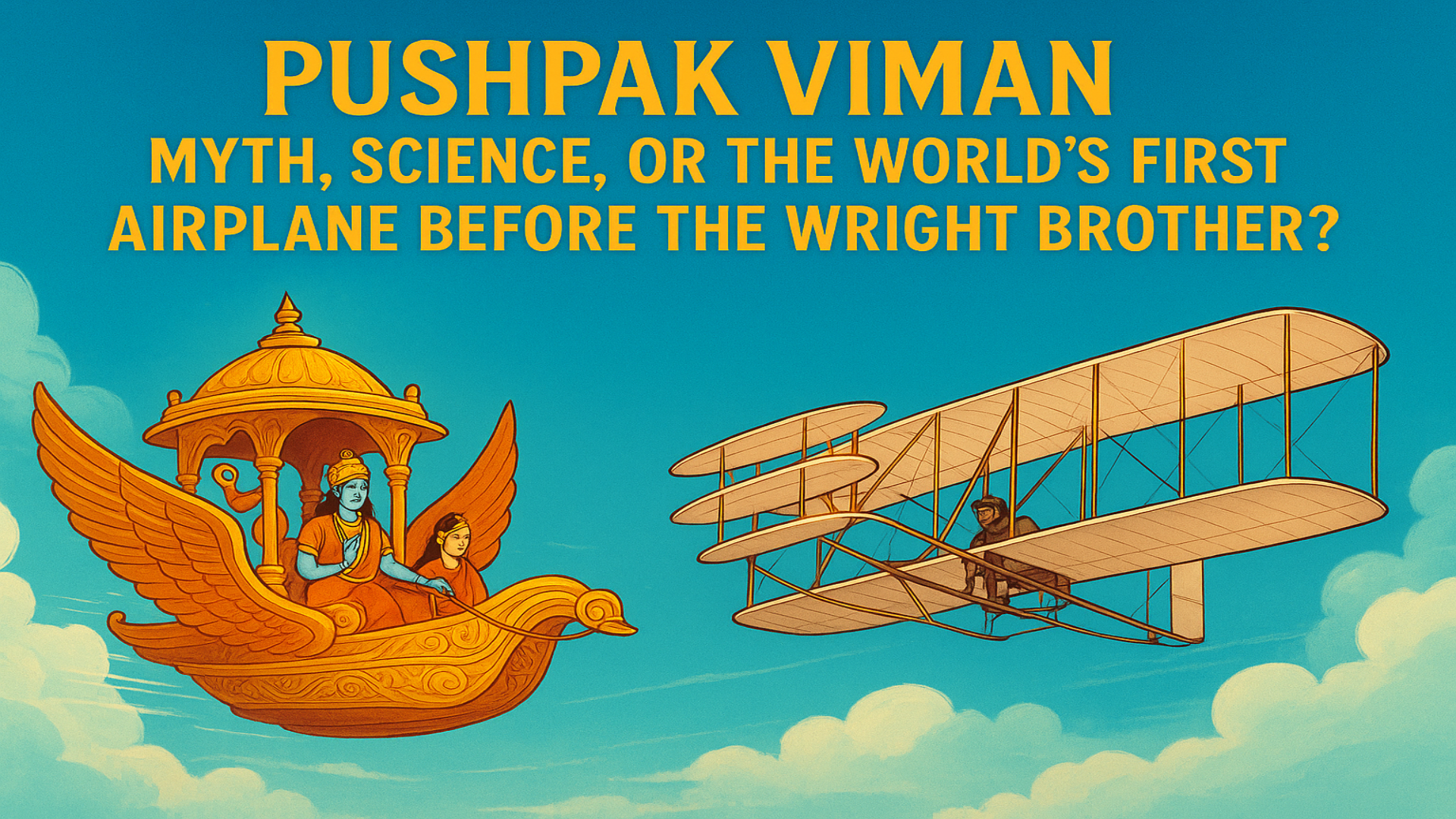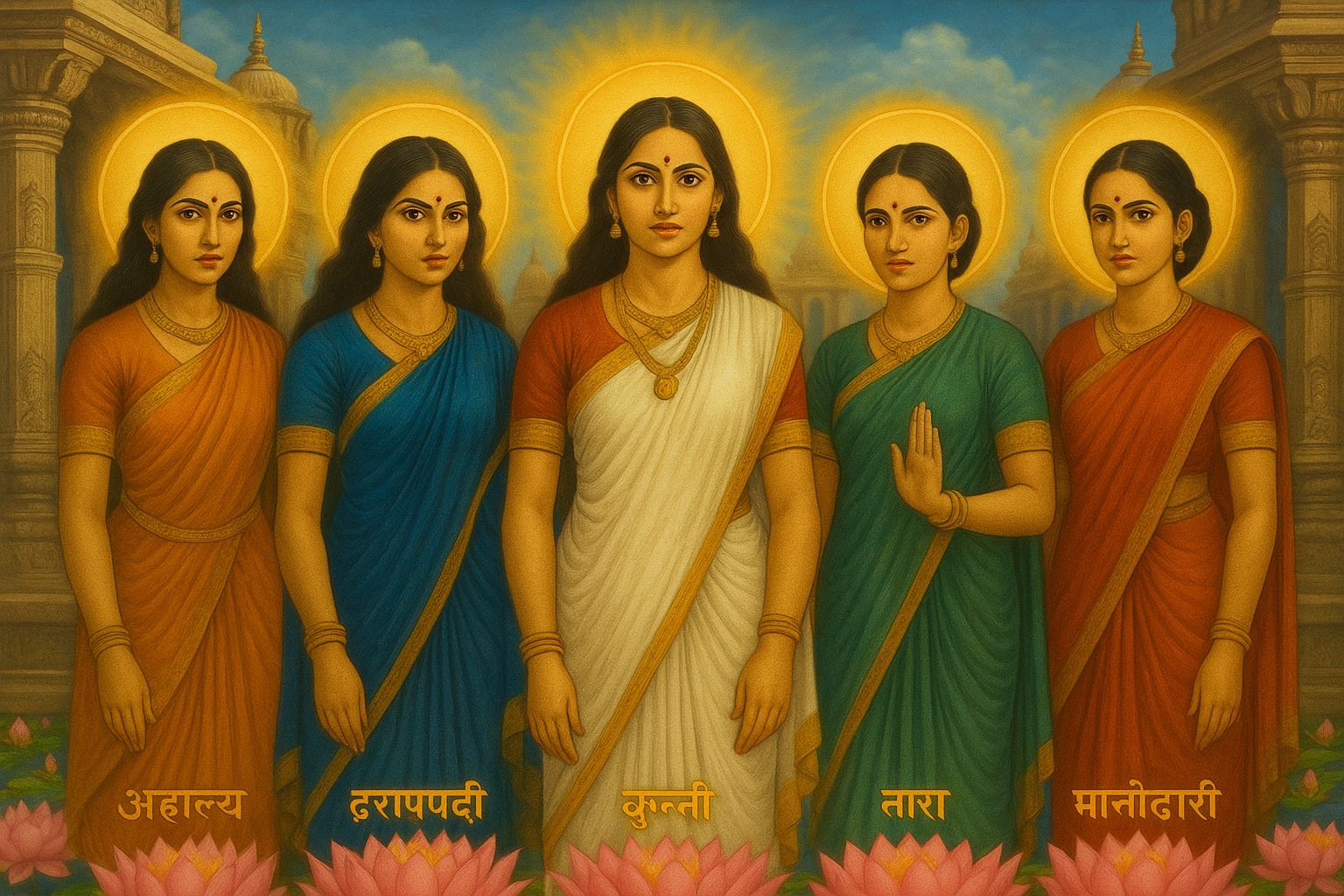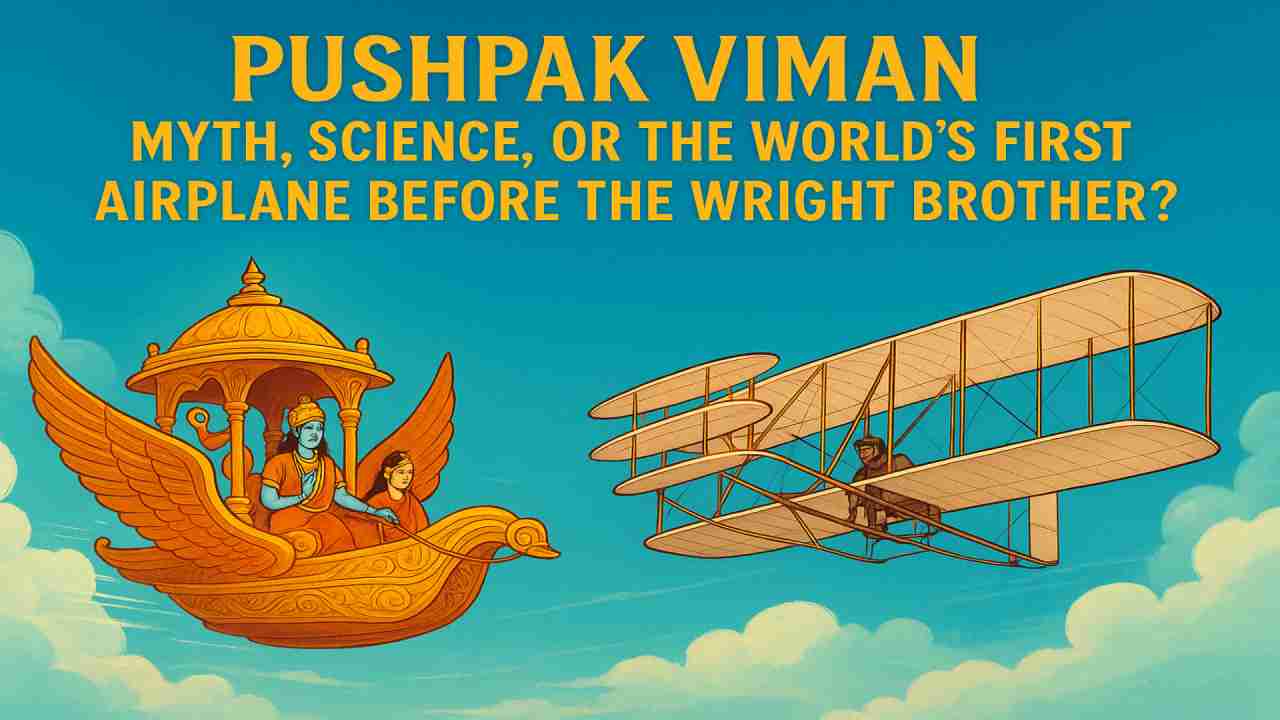
In recent times, Indian mythology has increasingly intersected with contemporary debates on science and technology. The most recent spark came from Union Agriculture Minister Shivraj Singh Chouhan, who claimed that India had the Pushpak Viman—an ancient flying chariot—long before the Wright brothers conducted their first successful flight in 1903. Speaking to students at IISER Bhopal, Chouhan remarked that Indian epics like the Ramayana and Mahabharata describe sophisticated technologies, including aerial vehicles, missiles, and drones, suggesting that ancient India was more technologically advanced than generally acknowledged.
This statement follows closely on the heels of another controversial remark by Hamirpur MP Anurag Thakur, who asserted that Lord Hanuman was the first space traveler.Once again, these comments have stirred discussion about whether references to technology in Indian scriptures are meant to be taken literally or understood as symbolic.
The Wright Brothers and the Dawn of Aviation
Before looking at the mythological side, it’s worth remembering the amazing achievement of Orville and Wilbur Wright. On December 17, 1903, in Kitty Hawk, North Carolina, they flew the Wright Flyer, making history with the first ever controlled, powered flight. This event is widely celebrated as the beginning of modern aviation.
From that moment, the aviation industry advanced at breakneck speed, leading to passenger planes, fighter jets, drones, and even spacecraft. However, the claim that India had already conceptualized aerial vehicles thousands of years before 1903 challenges the mainstream narrative of technological progress.
Pushpak Viman in the Ramayana
The Pushpak Viman is one of the most well-known mythological flying vehicles in Indian literature. It is primarily described in the Ramayana. Ancient texts indicate that the Pushpak Vimana was originally associated with Kubera, the celestial guardian of wealth. However, it was later seized by his half-brother, the demon king Ravana, who used it during his reign in Lanka.
After Ravana was defeated, Lord Rama used the Pushpak Viman to return to Ayodhya from Lanka, along with Sita, Lakshmana, and other companions. The Pushpak Viman was said to be large enough to accommodate many passengers and could move according to the pilot’s will. Unlike mechanical aircraft, it did not require fuel or wings and operated in a manner that appears magical yet strangely reminiscent of modern aeronautics.
Descriptions in Ancient Texts
Apart from the Ramayana, references to flying machines—commonly called Vimanas—also appear in the Mahabharata and various Puranic texts.These accounts mention:
- Self-propelling aerial chariots capable of traversing long distances.
- Weapons launched from the sky, resembling modern missiles.
- Guided navigation systems, where the craft could move “according to the pilot’s thought.”
Some Sanskrit texts even describe shapes of vimanas, propulsion methods (involving mercury and energy sources), and multi-storey flying palaces. The controversial text Vaimanika Shastra, compiled in the early 20th century but attributed to ancient rishis, provides detailed diagrams of supposed aircraft designs. Though dismissed by modern scientists as pseudoscience, these writings fuel the argument that ancient India may have at least imagined advanced aeronautical concepts.
Mythology vs. Technology: Two Interpretations
The debate around the Pushpak Viman rests on two major interpretations:
1. Literalist View
Supporters of this perspective argue that ancient India possessed advanced technologies that have since been lost. They suggest that descriptions of vimanas are not mere myths but accounts of real devices, possibly developed using knowledge systems far ahead of their time. Chouhan’s statement echoes this belief, drawing parallels between ancient Vimanas and today’s drones and aircraft.
2. Symbolic or Metaphorical View
Skeptics, however, contend that these descriptions are allegorical. The Pushpak Viman, in this view, symbolizes divine power, imagination, or spiritual elevation rather than physical technology. For example, Rama’s journey back to Ayodhya in a flying chariot may be interpreted as a metaphor for his victorious return and moral supremacy.
Political and Cultural Significance
When politicians such as Shivraj Singh Chouhan speak this way, their words echo beyond scholarly debate. For a large number of Indians, mythology is deeply connected to their sense of cultural pride and national identity. Connecting ancient scriptures with modern science strengthens the idea that India has long been a hub of wisdom.
His core message was an appeal to India’s talented youth to remain in the country, take charge of its future, and help drive it ahead. By recalling ancient achievements, he wanted to spark the same sense of curiosity and innovation in today’s students.
The Controversy
Many critics believe such claims mix up mythology with actual science. The Wright brothers’ achievement is well-documented and supported by historical evidence. In contrast, no archaeological or physical evidence has ever been found to prove the existence of the Pushpak Viman.
Scientific institutions have often distanced themselves from such claims. For instance, the Indian Science Congress in 2015 faced backlash after a paper claimed ancient Indians had invented planes far superior to modern ones. Many scholars worry that presenting mythology as historical fact undermines India’s reputation in the global scientific community.
At the same time, dismissing these ideas outright ignores the cultural significance and imaginative depth of ancient Indian literature.Myths, real or imagined, reflect human curiosity, imagination, and the effort to make sense of the world.
Ancient Imagination and Scientific Curiosity
One way to bridge the divide is to recognize that ancient descriptions of vimanas demonstrate scientific imagination. While they may not have been real machines, they show that people thousands of years ago were already envisioning human flight, space travel, and advanced weaponry.
This mirrors the way modern science fiction has frequently served as inspiration for real-world innovations. For instance, Jules Verne’s 19th-century novels envisioned submarines and moon landings, while H.G. Wells imagined atomic bombs long before their invention. Similarly, vimana stories may have been ancient science fiction, reflecting humanity’s timeless dream of conquering the skies.
Why the Debate Matters Today
The debate around Pushpak Viman is not just about history—it also reflects how societies use the past to shape the future. For India, a country rapidly advancing in space research, drone technology, and aeronautics, invoking ancient myths provides both inspiration and controversy.
- For believers, it reaffirms cultural pride and motivates innovation.
- For skeptics, it serves as a reminder to separate scientific evidence from mythology.
- For students and youth, it opens the door to exploring both heritage and critical thinking.
Chouhan’s emphasis on preventing brain drain—urging students not to seek only opportunities abroad—connects the glory of India’s mythological past with the promise of its scientific future.
Final Thoughts
The Pushpak Viman remains one of the most fascinating symbols of India’s mythological heritage. Whether viewed as a literal aircraft lost to time or as a metaphor for human imagination, it continues to inspire debates about the relationship between mythology and science.
Shivraj Singh Chouhan’s remarks may have sparked controversy, but they also rekindle interest in ancient Indian texts and their relevance today. While the Wright brothers’ flight of 1903 is an undeniable milestone in human history, the Pushpak Viman—real or imagined—reminds us that the desire to fly has always been embedded in human culture.
Ultimately, the challenge lies in appreciating mythology as a source of inspiration without conflating it with empirical science. If balanced carefully, India can celebrate its epics while also leading the way in genuine technological innovation, ensuring that the dreams once written in scripture become realities in the skies of tomorrow.


